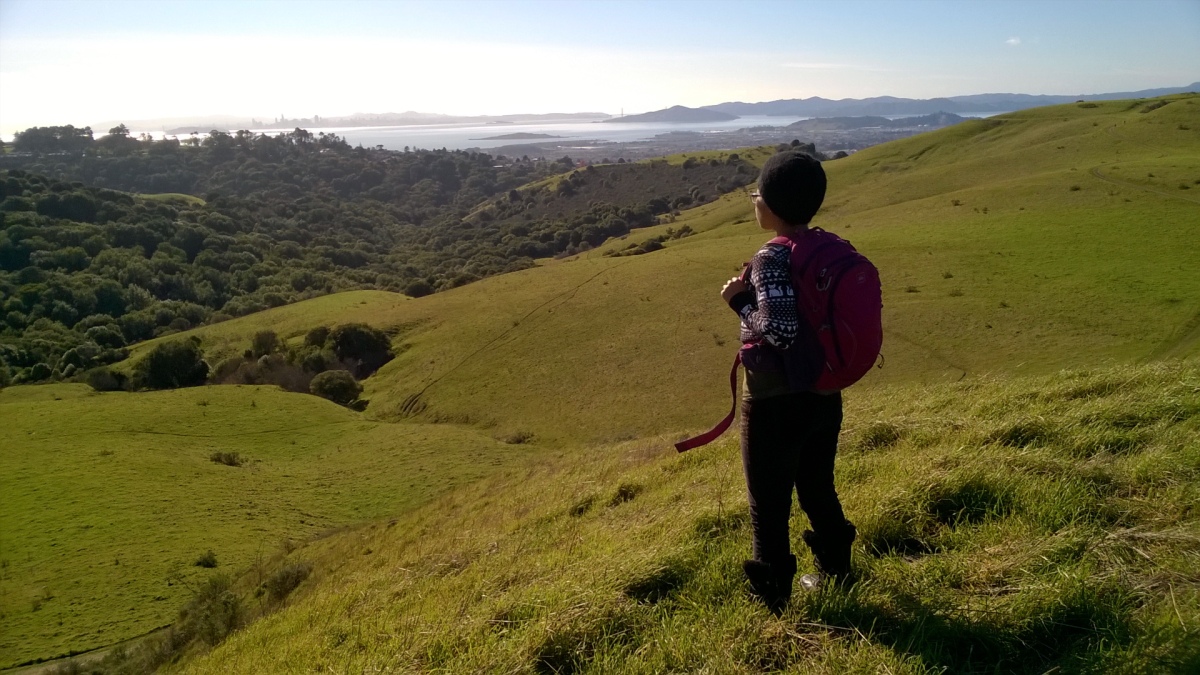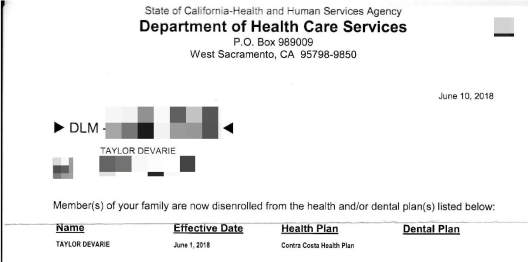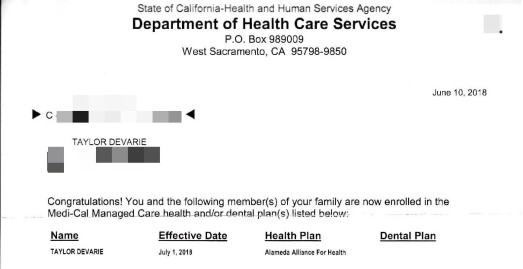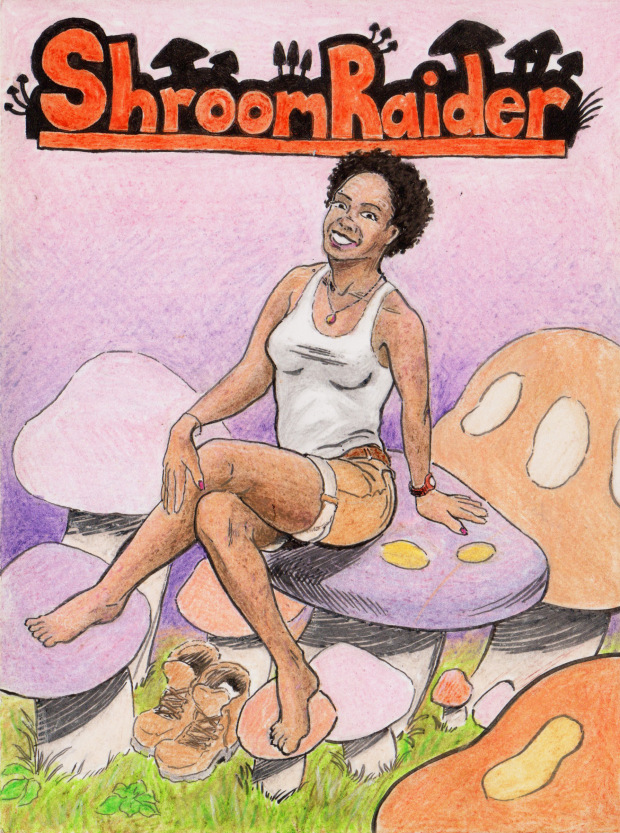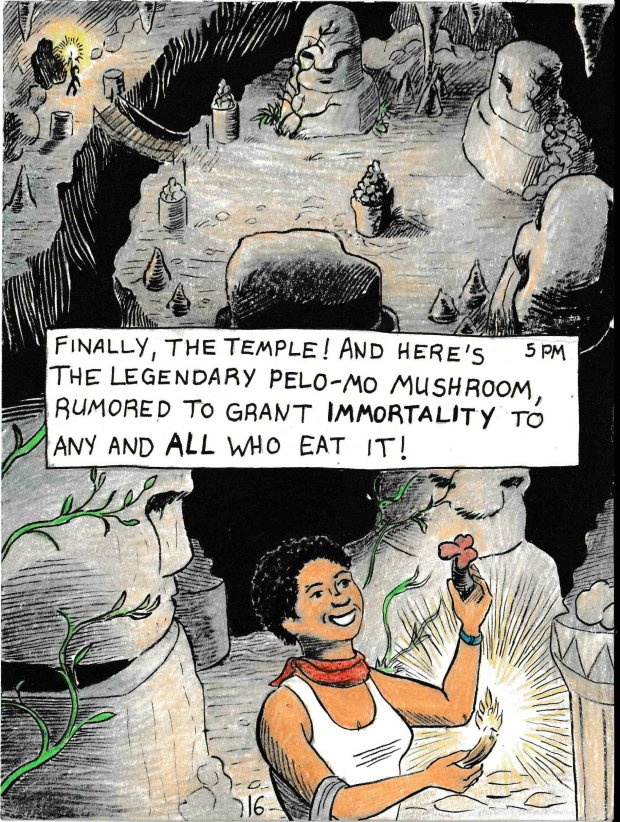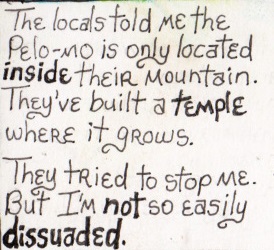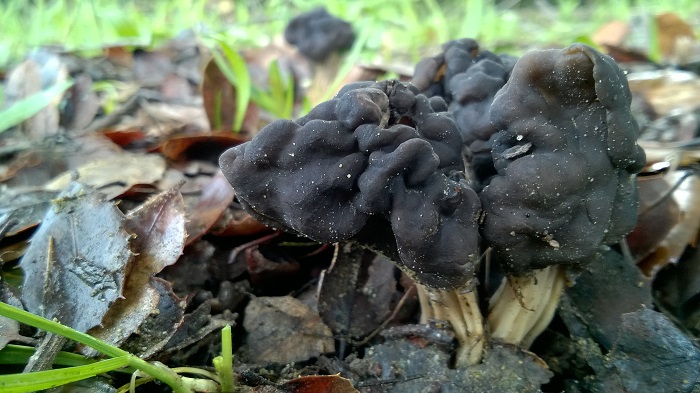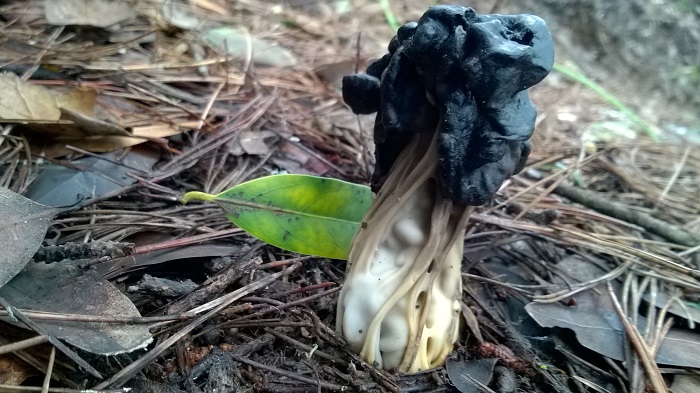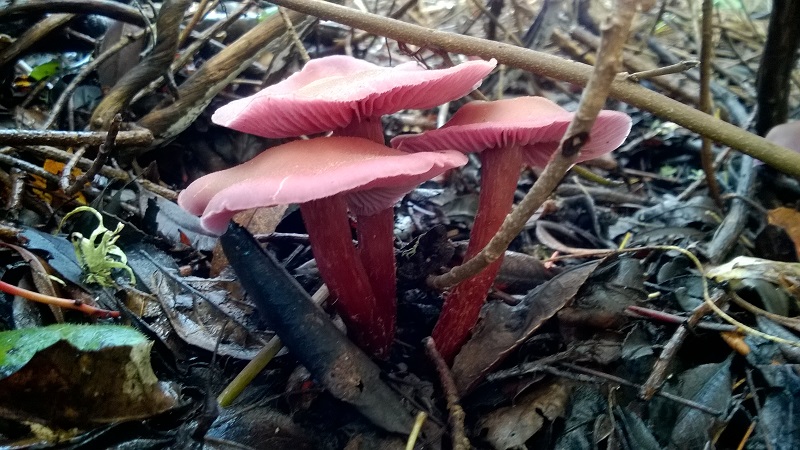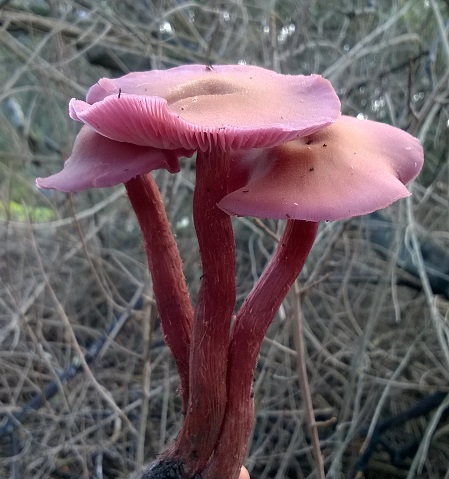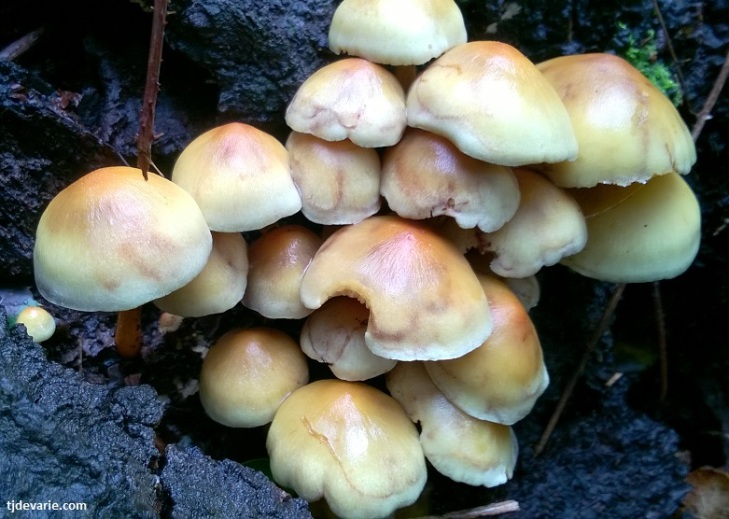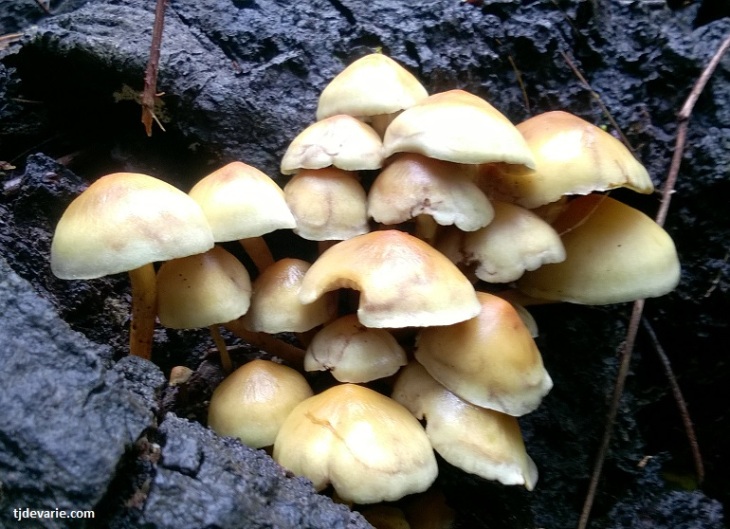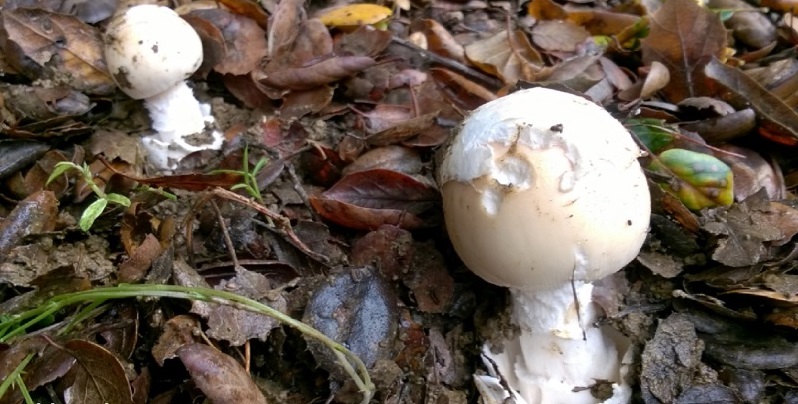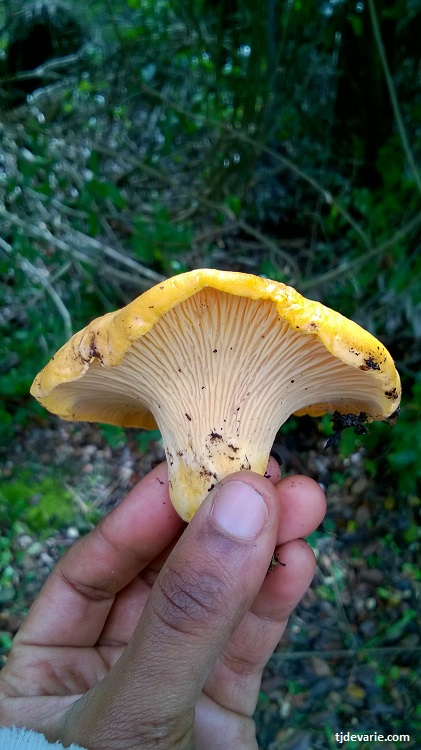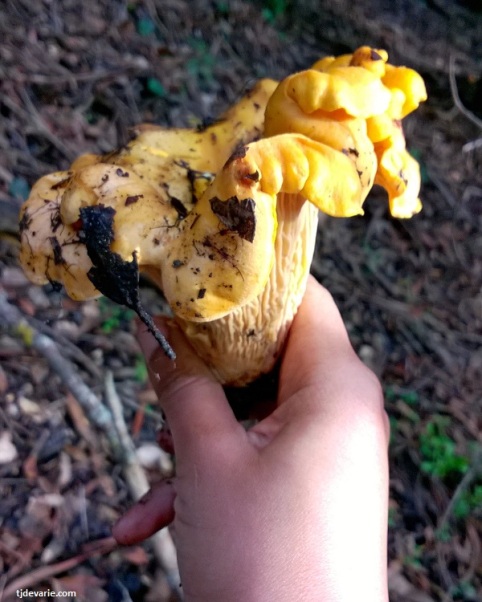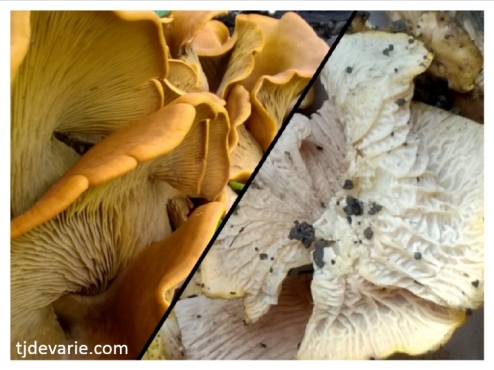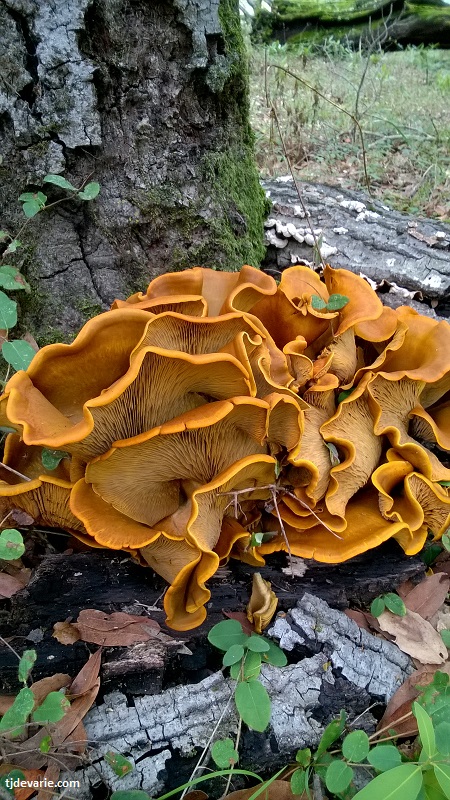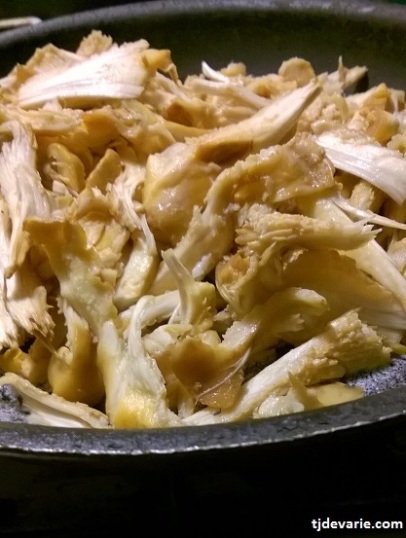[690 words, 3-5 min read]
The Amanita genus is famed for its deadly mushrooms. This genus can be trouble, but there are a few edible species in it. Amanita caesarea (Caesar’s Mushroom) is a highly regarded edible, and the species Amanita hemibapha, commonly known as the Half-dyed Slender Caesar, is edible as well.
I’m thinking the depicted pale mushrooms are Amanita phalloides, commonly known as Death Caps. I didn’t get the best look at these for identification purposes, but they were beautiful from afar! Many Amanita phalloides images depict fruit with greener caps than these two depicted mushrooms, but their distinctive volvas and pale coloration are red flags to me, and they’re just too immature to know what color they’ll turn.

Amanita muscaria, commonly known as the Fly Agaric
The beautiful (but toxic) Amanita muscaria, commonly known as Fly Agaric, is in the same genus as the phalloides. Muscaria has been traditionally used as an insecticide and sprinkled in milk to attract unsuspecting flies. It also has religious significance in Siberian culture due to hallucinogenic properties caused by ibotenic acid, muscimol, etc. and many cultures reportedly use it as an intoxicant. Apparently, humans have found many uses for this ‘shroom!
As for reported toxicity, North American deaths from Amanita muscaria compounds have been documented as recently as 2012 though—which means people are safest steering clear of this mushroom.

Likely Amanita phalloides, the Death Cap. Related to muscaria
This is as good a time as any to consider the possibility of poisonings, as they *are* a real danger in foraging. David Fischer of Americanmushrooms.com has a logical view on the practice, and below are some of his words concerning the hallmarks of intelligent foraging, how average people regularly avoid poisonings and who qualifies as an “expert”:
“Millions of North Americans pick and eat wild mushrooms every year, without as much as a belly ache.
Are they “experts”? Yes! At least, they are experts on the edible wild mushrooms they know. Either their parents or grandparents taught them how to identify morels, or puffballs, or meadow mushrooms, or they have a good field guide and they read it… or both.
No one with a reasonable understanding of the importance of properly identifying mushrooms—with a serious awareness that some species are fatally toxic—falls victim to the Death Cap. The folks who eat Death Caps do not use field guides: they just pick the damned things and eat them. No trip to the library. No reading. No spore prints. No idea what a “partial veil” is or what “gill attachment” means.
So… Is it really dangerous to eat wild mushrooms?
How dangerous is it to drive a car? If you’re drunk or careless, it is VERY dangerous; if you’re sensible and pay attention, it is reasonably safe.
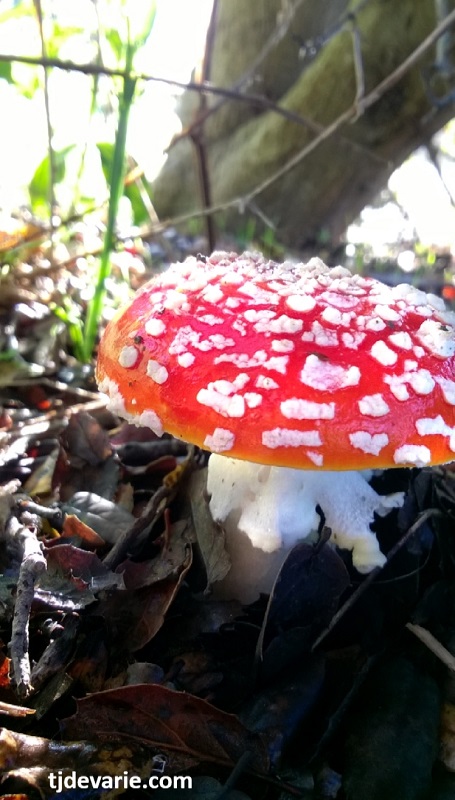
Amanita muscaria, related to the phalloides
Consider this: Would you pick and eat an unfamiliar berry simply because it “looked good”? Of course not. Finding, identifying, preparing, and eating wild mushrooms can be a delightful pasttime—IF it is done intelligently.
Otherwise, it is a terrible “accident” waiting to happen.”
I’m so grateful for all the mushroom knowledge made available thanks to the diligent study and reporting of mycologists around the world. They make it possible to forage intelligently.
edit 2/3/17: I replaced all instances of “Destroying Angel” with “Death Cap”. “Destroying Angel” fungi are also poisonous, but this colloquial term usually refers to A. bisporigera, A. virosa and A. magnivelaris, NOT A. phalloides. There is a European (spring destroying angel) A. verna which resembles A. phalloides. A HUGE thanks to 1left for bringing this to my attention, whose blog is a wonderland of knowledge about wildcraft and foraging. You should check it out.
🍄🍄🍄
Genus: Amanita
Species: phalloides
Edibility: inedible – highly toxic
Sources:
https://botit.botany.wisc.edu/toms_fungi/mar2002.html
http://americanmushrooms.com/deathcap.htm
http://www.bayareamushrooms.org/education/further_reflections_amanita_muscaria.html
*Disclaimer: This site is provided for informational purposes only. Taylor assumes no responsibility or liability for any consequences of readers actions. Though every reasonable effort is made to present current and accurate information, identifications may be incorrect (Taylor *is* a novice) – but that’s where community input helps! Please, feel free to correct misinformation you find (or just add your two cents) in the comments!
Happy foraging!
Save

